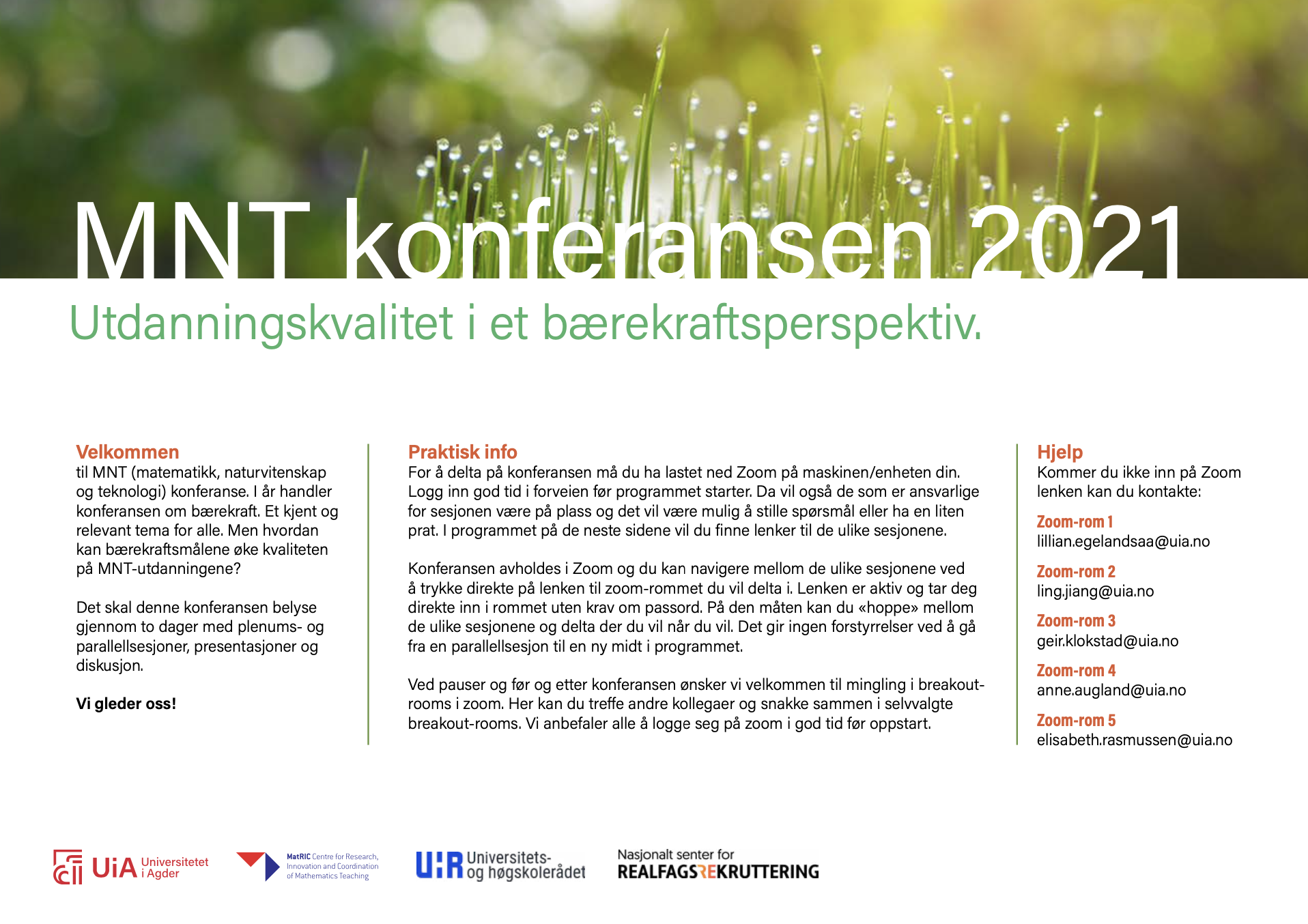Bruk av studentresponssystem i nettundervisning
DOI:
https://doi.org/10.5324/njsteme.v5i1.3922Abstract
I denne artikkelen vil jeg presentere ulike måter studentresponssystem (SRS) kan brukes for å håndtere noen av utfordringene med nettbasert undervisning, slik som kommunikasjon mellom lærer og student, og hvordan legge opp til, og følge opp, gruppearbeid og faglige samtaler på en god måte. Artikkelen vil vise praktiske tips med å gjennomføre Peer Instruction-metoden, en populær SRS-metode for å fremme faglige samtaler og kritisk tenking, samt vise hvordan man kan bruke systemet til å fange opp usikkerheter hos studenter i gruppearbeid og oppgaveløsning, og hvordan dette kan brukes til å bedre tilpasse gjennomganger av oppgaver.
Downloads
Downloads
Published
How to Cite
Issue
Section
License
Copyright (c) 2021 Kjetil Liestøl Nielsen

This work is licensed under a Creative Commons Attribution 4.0 International License.
The Nordic Journal of STEM Education licenses all content of the journal under a Creative Commons Attribution (CC-BY) licence. This means, among other things, that anyone is free to copy and distribute the content, as long as they give proper credit to the author(s) and the journal. For further information, see Creative Commons website for human readable or lawyer readable versions.
Authors who publish with this journal agree to the following terms:
1. Authors retain copyright and grant the journal right of first publication with the work simultaneously licensed under a Creative Commons Attribution License that allows others to share the work with an acknowledgement of the work's authorship and initial publication in this journal.
2. Authors are able to enter into separate, additional contractual arrangements for the non-exclusive distribution of the journal's published version of the work (e.g., post it to an institutional repository or publish it in a book), with an acknowledgement of its initial publication in this journal.
3. Authors are permitted and encouraged to post their work online (e.g., in institutional repositories or on their website) prior to and during the submission process, as it can lead to productive exchanges, as well as earlier and greater citation of published work (See The Effect of Open Access

